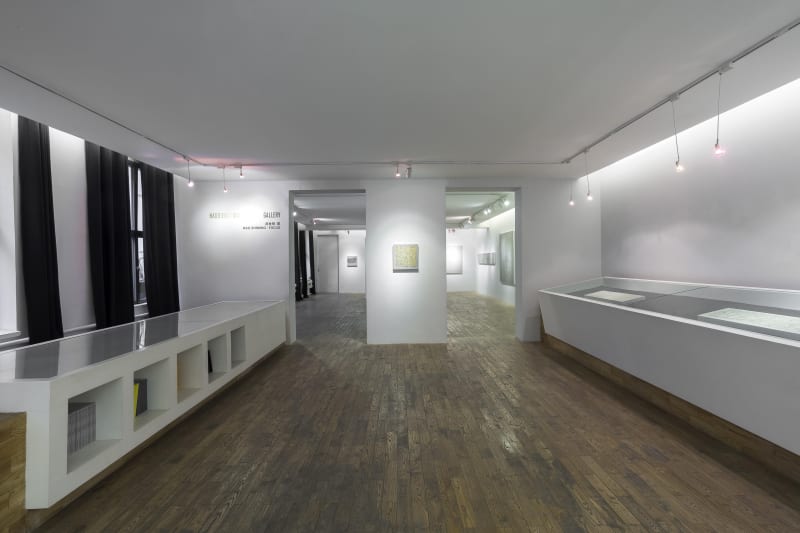The last decade saw a surge of interest for ink artworks from artists and collectors. New practises have emerged, making use of traditional brushes, characters, water, paper and silk to deconstruct this artistic heritage. Classical themes and pictograms are reinterpreted, lines are redrawn and the tools themselves are subverted.
Hao Shiming (b.1977) is a talented representative of the new ink move- ment. He engages in questions of timelessness, of the link between tradition and modernity and identity. He feeds on classical culture and ancient Chinese texts to inspire his art.
Graduated from the traditional painting department of the Tianjin Academy of Fine Arts in 2000, Hao Shiming spends the next few years perfecting his technique and ridding the canvas from unnecessary flourishes, limiting the materials used and moving away from figuration. He thus develops a very unique style, systematically doubling the strokes and filling the frame with numerous layers of characters. The resulting works are sophisticated and minimalist. His approach is tinted by several Chinese philosophies, by an interest in Buddhism and by a reflexion on ephemerality and renewal.
In this show, he focuses on his “The Thousand Character Classic” series started in 2014. It is a classical Chinese poem, dating back from the 6th century, commissioned by emperor Wu to the literati Zhou Xingsi so that the heir to the crown might practice calligraphy. The poem would later serve to teach characters to children and therefore belongs to the collective memory and cultural identity of China.
Hao Shiming recomposes each character of the poem with his own writing on 30 x 30 cm square frames. His stroke is laid directly on the silk, with no correction. The artist’ s 2 hours of daily calligraphy practice reinforce this creative process.
While most works use 2 colours, the artist also offers more colourful paintings in his other series (“Book of Jin“, “Cursive Script in Tang Dynasty Style”) by inserting golden or red ink touches, creating new contrasts. Landscapes and rocks in homage to the past or objects like chairs – a symbol of power – are also part of his artistic production and thought.
An important facet of contemporary artistic creation in China, contemporary ink has a legitimate place on the current Chinese artistic scene. The work of Hao Shiming thus helps us to better understand this movement which is today part of contemporary art in China.
Hao Shiming | Focus: Beijing
Past exhibition

